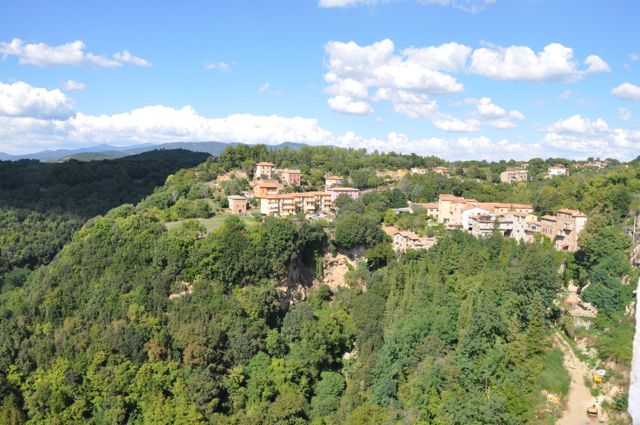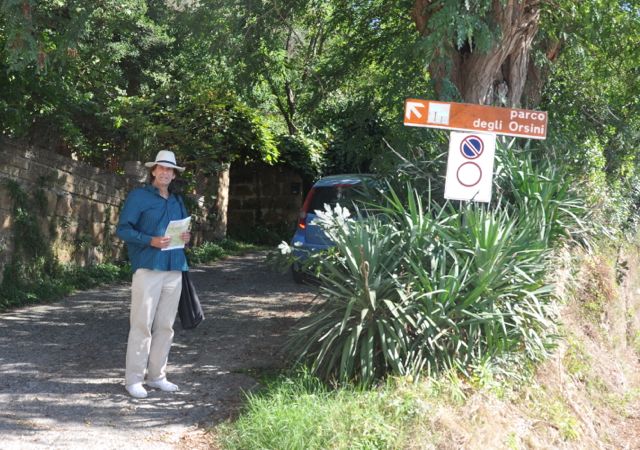
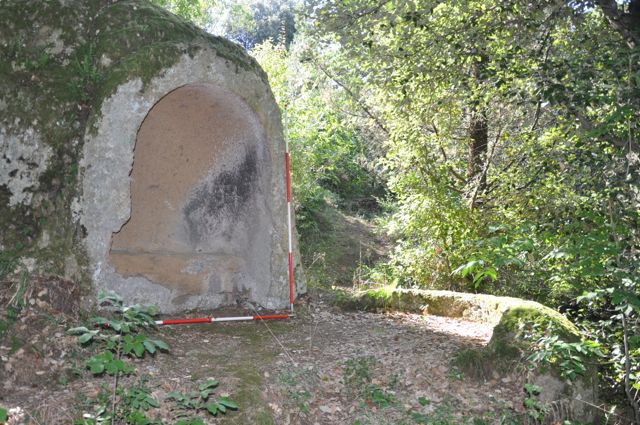
There's a signpost, this must be the way. The
first monument a seat in a carved recess with a low curving wall in
front of it, looking west.
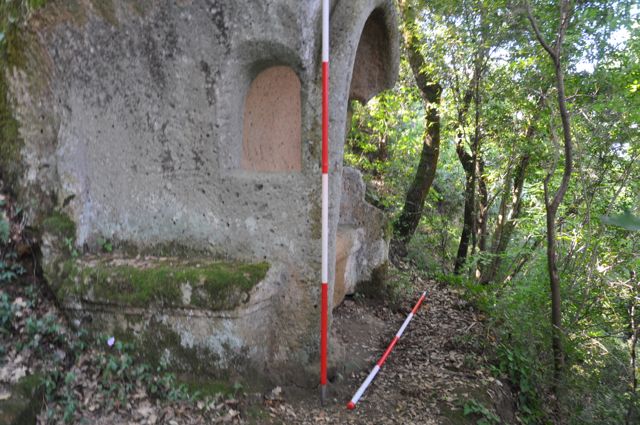
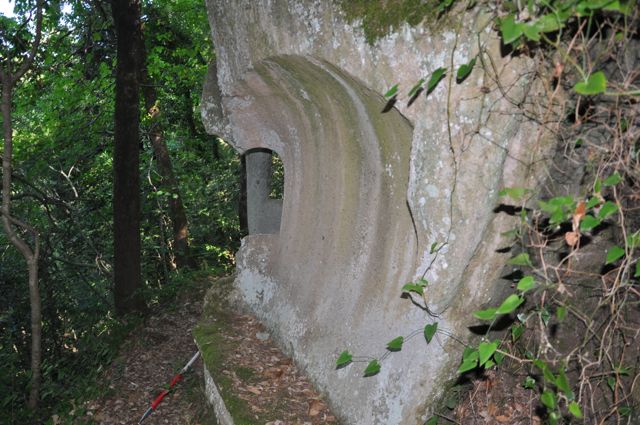
More or less immediately below a second seat carved in a niche with
side window, looking west, and just round the corner another bench looking east
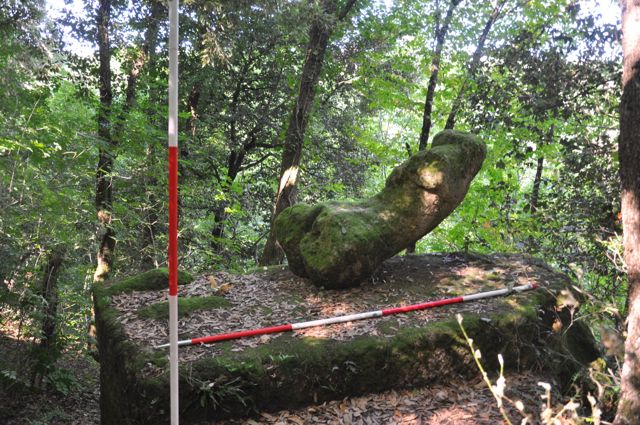
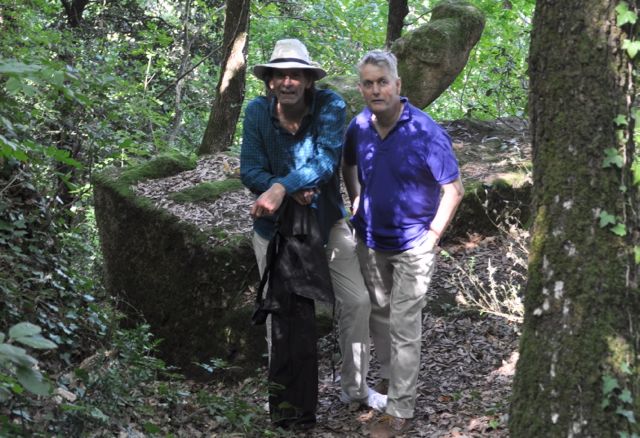
A carved remnant of a female figure... other interpretations are
available, looking north west plus two intrepid explorers (Ask Michael
about his ravine experience).
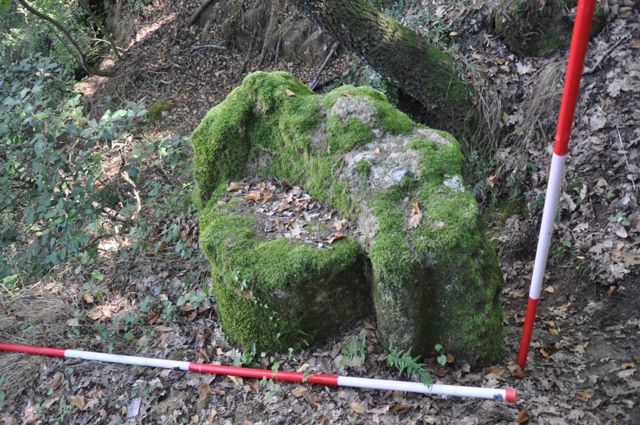
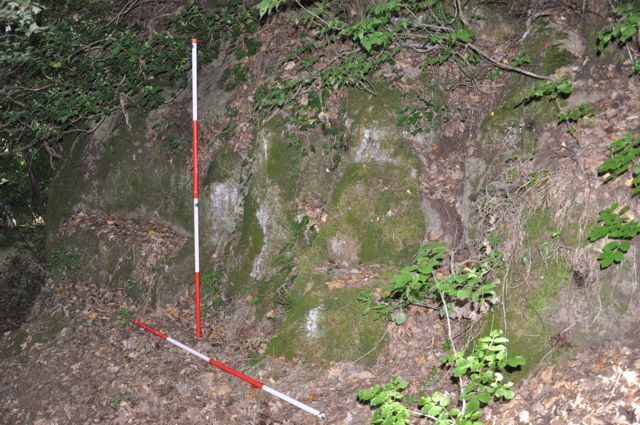
A further carved stone, possibly a seat, we're moving along the face of
the hill heading east, and a seat allegedly poised between the legs of
a giant, there's an early photograph where it looks quite convincing.
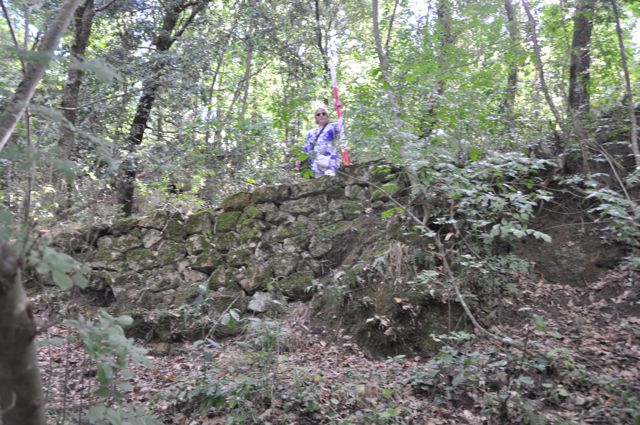
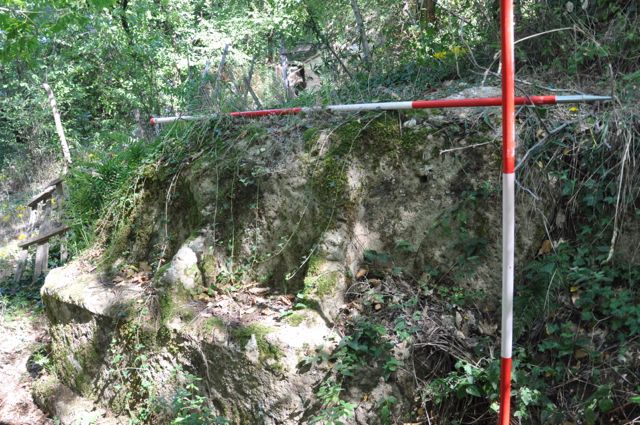
Verna poised on top of an ancient wall, quite a lot criss cross the
slopes, looking south and a final set of seats up on the brow of the
ridge looking north east.
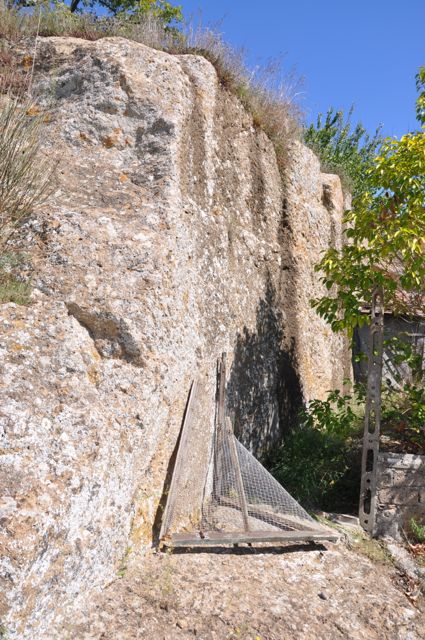
Cut stone faces near the present entry to the park looking north east.
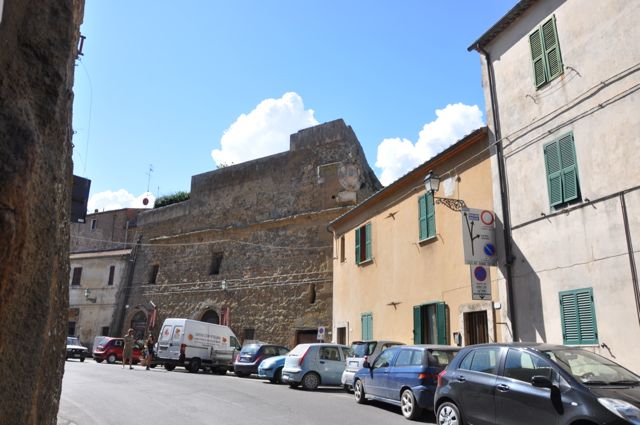
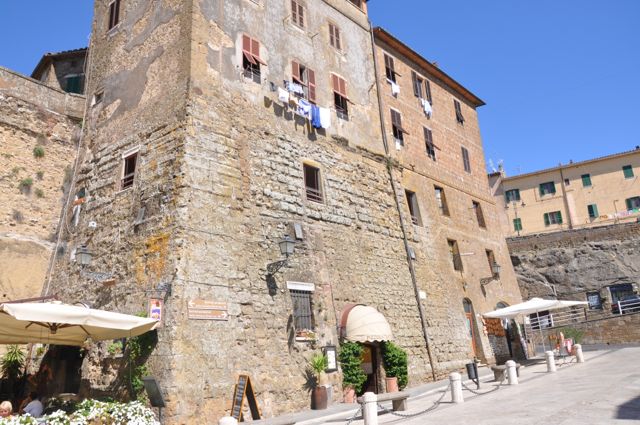
Still a sucker for Renaissance fortifications, two bastions at either
end of the wall that isolates the town on its peninsula: the north
bastion looking south west and the south bastion looking north east.
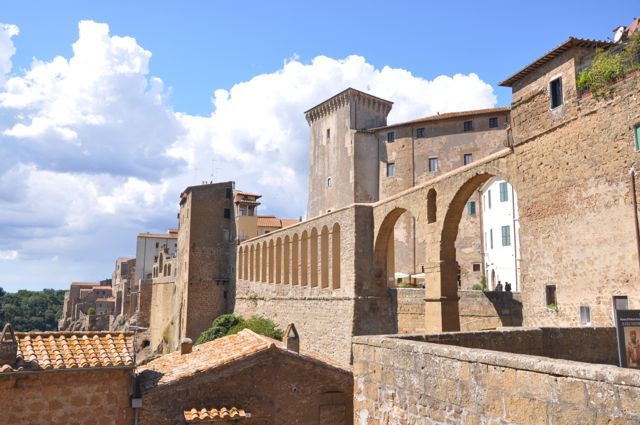
The enormously impressive aqueduct built in 1545 by Gian Francesco Orsini to bring water to the town, view looking west.
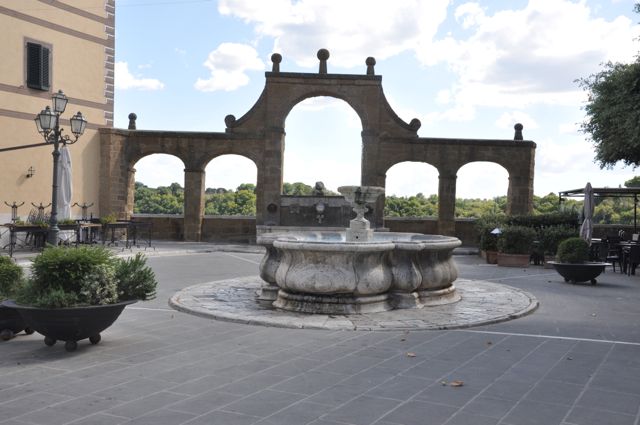
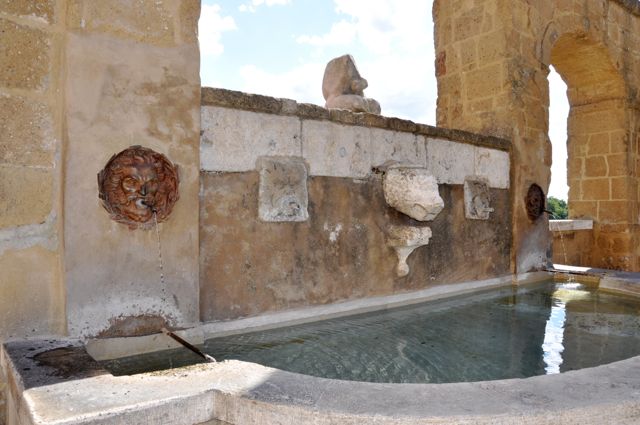
And at the end of it all the public fountain with fountain heads of a
least three different periods lining up, views looking south and south
west.
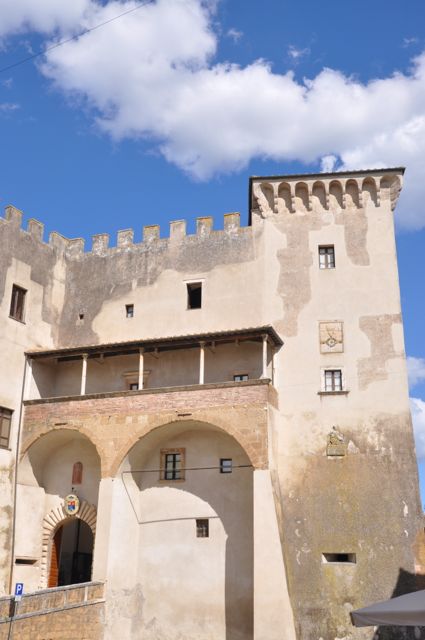
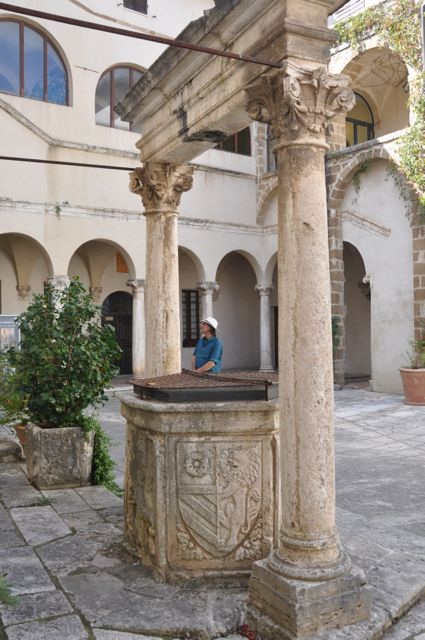
The
Palazzo Orsini converted from a thirteenth century fortress by the
architect Giuliano de Sangallo, entrance looking east and well
head in the central courtyard.
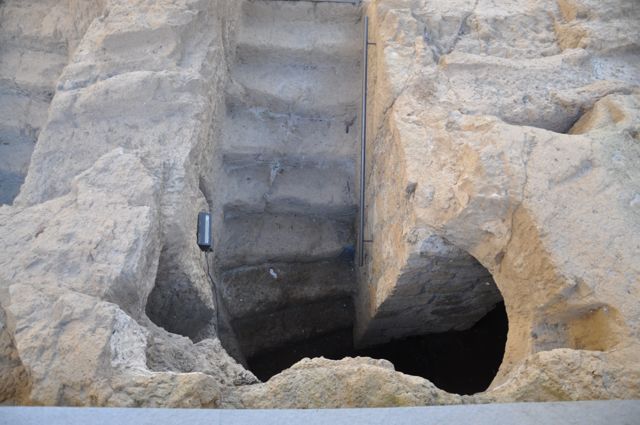
Rock cut features in a small open air museum ranging from Etruscan to nineteenth century.

And here's how to find the garden remains. They're to the north of the town and are marked on this tourist map as the Parco di Poggio Strozzoni or Strangler's Hill Park... hmm.
My ancient Blue Guide describes the place thus: 'Outside the town on the road to Sorano is a gateway which forms the entry to Poggio Sterzoni
once a famous park created by Niccolo IV Orsini in the 16C. The carved
statues, steps and niches exploit the natural rock formations of the
site. It is here that Count Orso Orsini strangled his wife Isabella
degli Atti in 1575'. Well that explains it then.
Back to Bomarzo
